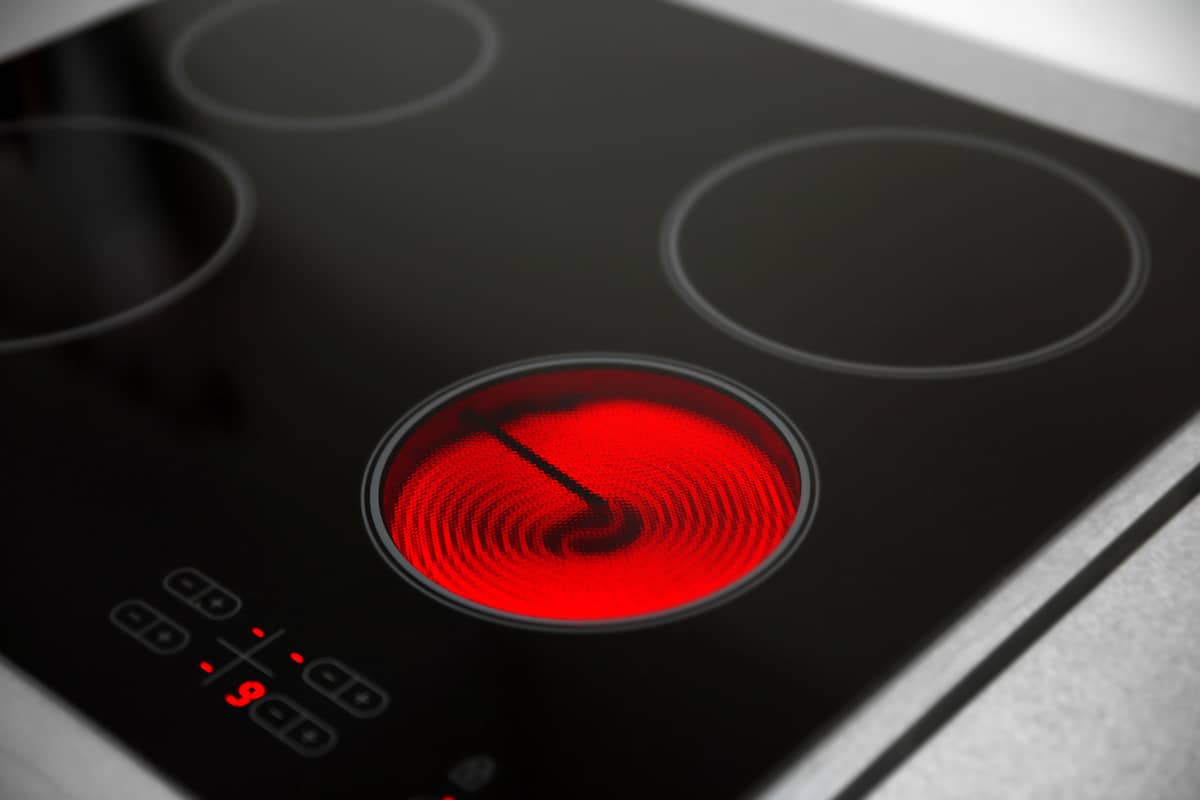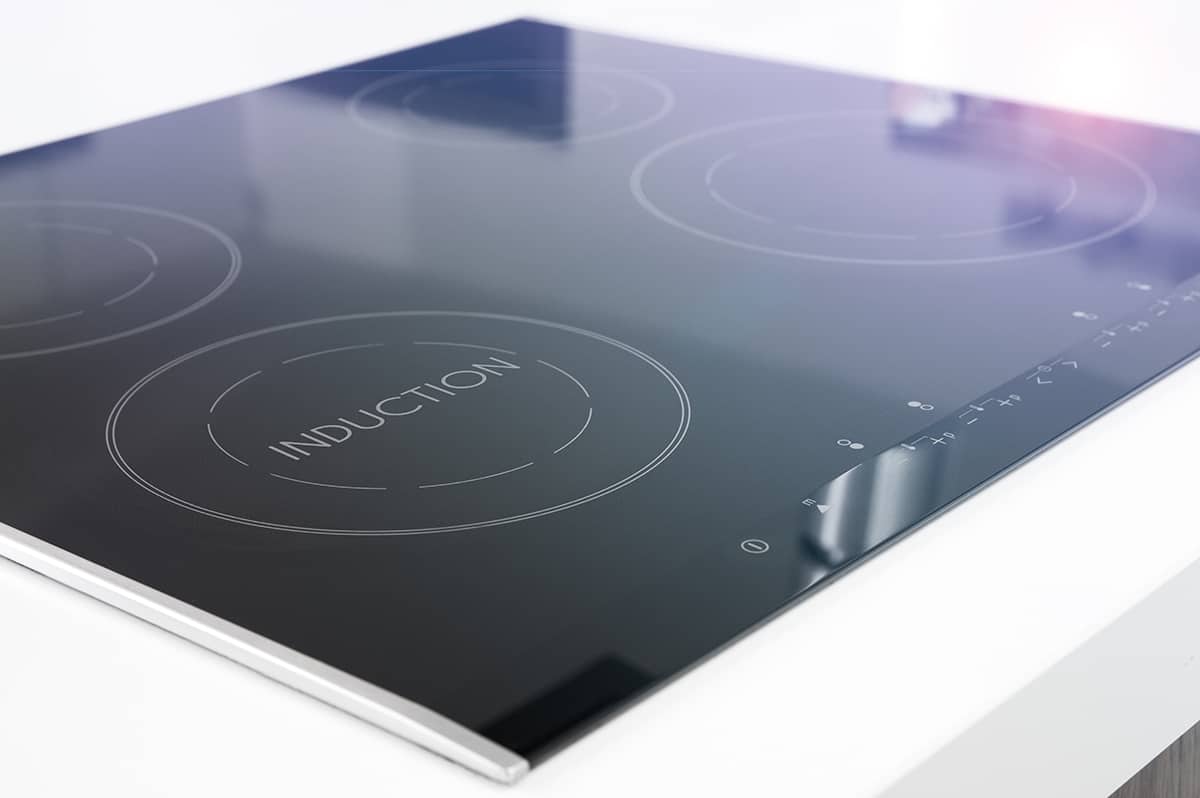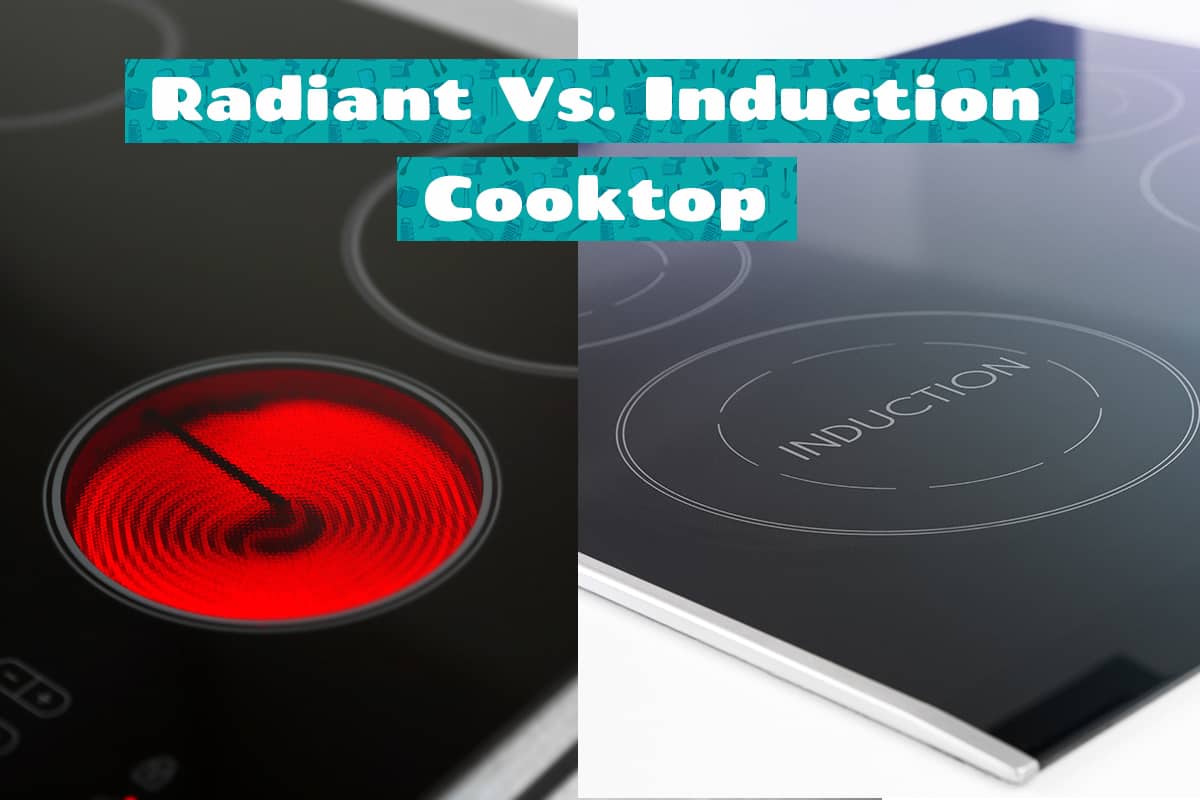Cooktops are central to every kitchen. After all, it’s where most, if not all, of your food will be prepared. If you’re redesigning your kitchen, you should familiarize yourself with the various types of cooktops available. Many of you might be wondering how radiant and induction cooktops, both very popular today, compare.
Radiant cooktops heat cookware using electric coils or a halogen lamp beneath a ceramic surface. They are often less expensive upfront and compatible with any cookware but are less energy-efficient.
Induction cooktops use magnetic fields to directly heat the cookware, leaving the cooktop relatively cool. They are generally more energy-efficient and faster but require compatible cookware.
This guide will dive deeper into the specifics of both types of cooktops, including their upsides and drawbacks. At the end of the post, we’ll help you determine which of the two is more suitable for your kitchen.
What Is a Radiant Cooktop?

A radiant cooktop, a subtype of ceramic cooktop, is a popular choice for many homeowners owing to its sleek appearance and reliable performance. They operate by sending electricity through metallic coils or halogen lamps. When these coils or lamps heat up, they produce radiant heat, which is then transferred through the ceramic glass top to the pan or pot on the surface.
This mechanism is similar to traditional electric cooktops but with one significant difference. Instead of exposed electric coils, the coils in a radiant cooktop are hidden beneath a ceramic glass surface. This design provides a flat, easy-to-clean surface that also delivers even heat to your cookware.
Pros of Using a Radiant Cooktop
- Cost-effectiveness: While the exact price depends on the specific model and brand, radiant cooktops are generally less expensive to purchase compared to induction cooktops. They also come in a wider variety of price points, making them accessible to a broader range of budgets.
- Efficiency: Apart from their generally lower upfront costs, radiant cooktops also have relatively low operational costs due to their efficient heating times and responsive temperature control.
- Durability and maintenance: Radiant cooktops, with their solid ceramic glass surface, are resistant to cracks and breaks from heavy pots and pans. They are also easier to clean than traditional coil cooktops because there are no crevices or coils where food and grime can accumulate. A quick wipe-down with a soft cloth and appropriate cleaning solution is usually all it takes to keep your radiant cooktop looking new.
- Compatibility with cookware: Radiant cooktops work with nearly all types of cookware, including stainless steel, copper, and aluminum. This means you can likely use the pots and pans you already own without needing to invest in new cookware.
Cons of Using a Radiant Cooktop
- Safety: While radiant cooktops can heat up quickly, they take longer to dissipate heat. This means that the surface will remain hot for several minutes after shutting down, posing potential safety risks. A warning light will inform you whether or not the ceramic surface is still hot to the touch.
- Unusable during blackouts: This is a general downside of all electrical appliances, including both radiant and induction stoves. The only workaround is to get a gas stove without an electrical ignition system, which is an entirely different discussion.
What Is an Induction Cooktop?

An induction cooktop, a modern innovation in the world of kitchen appliances, is a cooking device that offers high efficiency and precise temperature control. Unlike traditional cooktops that generate heat and transfer it to the cookware, induction cooktops heat the cookware directly, resulting in quicker and more energy-efficient cooking.
The primary working principle behind an induction cooktop is magnetic induction. Instead of using radiant heat like a conventional cooktop, induction cooktops produce an electromagnetic field that interacts directly with your pots and pans.
When an induction-compatible pan is placed on the cooktop, the magnetic field generated by the cooktop penetrates the metal of the pan, producing a resistive electric current. This current generates heat directly in the pan, bypassing the need to first heat the cooktop’s surface. This system significantly improves efficiency, as nearly all the heat is used to cook the food.
Pros of Using an Induction Cooktop
- Energy Efficiency: Since induction directly heats the cookware, very little energy is wasted in the cooking process. This efficiency can save energy over time, offsetting the higher initial cost.
- Rapid Heating and Precise Temperature Control: Induction cooktops heat up rapidly, saving you valuable time in the kitchen. Additionally, they provide precise and instant control over cooking temperatures, offering an experience similar to cooking with gas but with the benefits of electricity.
- Safety Features: Induction cooktops offer superior safety compared to other types of cooktops. The cooktop surface stays relatively cool, as the heat is generated in the cookware itself, reducing the risk of burns. Many models also have safety features like automatic shut-off if no cookware is detected and lock functions to prevent unintended changes in settings.
- Easy Cleaning: Induction cooktops have a flat glass-ceramic surface with no crevices, making cleaning simple. Spills and splatters don’t burn onto the surface as the cooktop stays cool, so you can quickly wipe them away.
Cons of Using an Induction Cooktop
- Cost: Induction cooktops tend to be more expensive to purchase than radiant cooktops. While the energy savings and cooking efficiency can offset this cost over time, the initial investment is higher.
- Cookware Compatibility: Induction cooktops require specific types of cookware made from magnetic materials. If your existing cookware is not compatible, you might need to invest in new pots and pans, adding to the overall cost.
- Noise: While generally quiet, some induction cooktops can produce a humming or buzzing noise, particularly at high power settings. This noise is usually caused by the interaction between the magnetic field and the cookware and can be more pronounced with lighter or ill-fitting pans.
Factors to Consider When Choosing Between Radiant and Induction Cooktops
Now that we have a basic understanding of what radiant and induction cooktops have to offer, let’s see which of them is more suitable for your home.
Budget
Induction cooktops are generally more expensive upfront than radiant ones. However, induction cooktops can be more cost-effective over time due to their energy efficiency, potentially offsetting the higher initial cost. If your budget is tight and immediate cost savings are important, a radiant cooktop may be a suitable option.
Cookware Compatibility
The type of cookware you already own could influence your choice. Induction cooktops require cookware made of magnetic materials such as cast iron or specific types of stainless steel. On the other hand, radiant cooktops are compatible with most types of cookware. If you have a collection of non-magnetic cookware that you love and don’t want to replace, a radiant cooktop may be more appropriate.
Cooking Habits and Preferences
If you frequently stir-fry, sauté, or need rapid temperature changes, the precision and responsiveness of an induction cooktop may appeal to you. However, a radiant cooktop might serve you better if you prefer slow, even cooking or use cookware like glass pots for slow-cooked casseroles.
Safety Considerations
Induction cooktops have a safety advantage because the cooktop surface stays relatively cool during cooking, reducing the risk of burns. You might lean towards induction if you have children or are concerned about kitchen safety. However, many radiant cooktops also feature safety options, such as hot surface indicators.
Ease of Cleaning
Both cooktops offer a smooth surface easier to clean than coil-type electric cooktops or gas burners. However, because the surface of an induction cooktop does not get as hot as a radiant one, spills are less likely to get baked onto the surface, making cleaning slightly easier.






